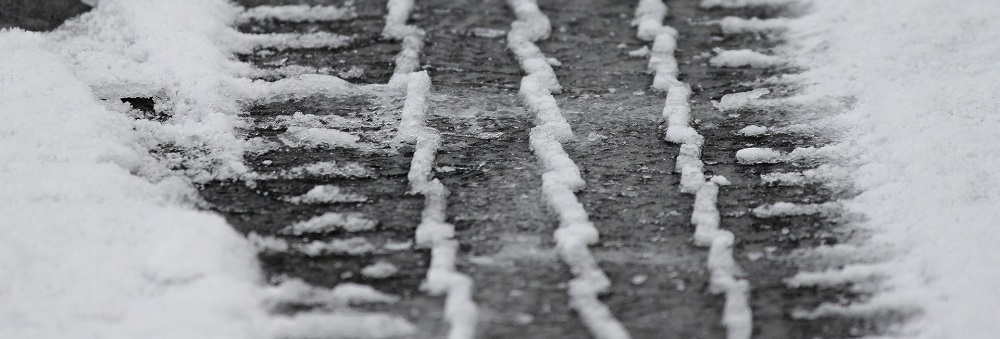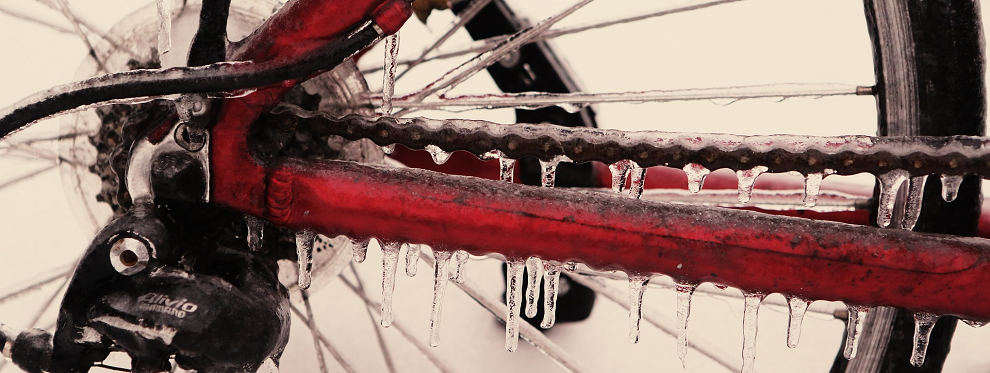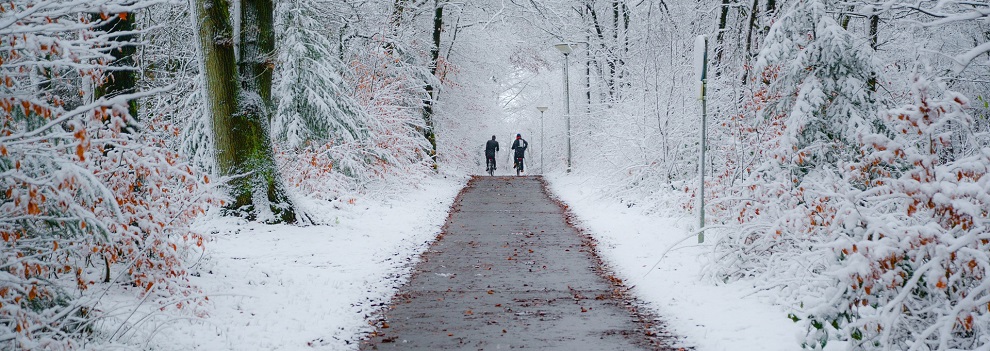10 Tips for Safer Cycling in Winter
Monday, November 11, 2019

- FREE Ashfield workplace digital travel pack is available here
- FREE Bassetlaw workplace digital travel pack is available here
- FREE Ashfield jobseekers digital travel pack is available here
- FREE Nottinghamshire digital travel pack is available here
The weather may be getting colder, but that doesn’t have to be a reason to keep off your bike. Here are a few suggestions to keep you cycling safely in wintertime.
1) Dress the part
Warm clothing is essential. Your extremities will be the first to get cold, as your body focuses on keeping your core warm, so wear decent gloves and socks to stop your fingers and toes from getting chilly.
Ideally your jacket should be thermal, windproof and waterproof. Having multiple layers may be a better idea than one thick coat, as these are easier to adapt.
Although you can overheat quickly when cycling, even when it is very cold, it is best to err on the side of caution. Wear more, riding slower than usual, rather than wearing too little, or you’ll have to pedal hard to keep warm.
In the winter the sun can be lower in the sky and directly in your eyes, if you’re travelling first thing in the morning or at sunset. Sunglasses or goggles, either clear or lightly tinted, can help with this, and will also help keep rain, dirt and grit from out of your eyes.
As with any time of year, dangling clothing is a hazard, as it can get stuck in your bike. Keep this in mind and avoid wearing a scarf or loose clothing.
2) Be bright
It’s even more important to have working lights on your bike in winter, with shorter days and less sunlight. Make sure your lights have power and are fully charged and take some spare batteries with you. If you’re not sure whether it’s dark enough for lights, put them on anyway.
Hi viz clothing will keep you reflective at night, and bright or fluorescent colours will help you stand out in normal light.

3) Watch out for ice
Weather forecasts can help you be prepared. If the temperature has dropped below freezing during the night, there’s a good chance of ice the next morning. You may not be able to spot black ice before you get to it, so be cautious.
Ice tends to form on areas closer to the kerb, as roads are designed so that water drains from the centre. It also tends to form at the bottom of hills and other low places – anywhere water can run off and collect.
If you do go over ice, keep straight, don’t pedal, and try not to brake as this can cause skidding.
Quiet roads that are good in warmer weather can be more prone to freezing. Major roads tend to be gritted more often, so it is usually best to stick to main routes, if possible.
4) Eat and drink
Make sure you eat before and during a ride, to keep your energy levels up. Keep drinking regularly too. It may not be apparent that you are sweating under all the clothes you’re wearing, but you can get dehydrated when cycling at any temperature.
Keeping drinks in a vacuum flask can stop them from getting too cold, and from giving you a chill.
![]()

5) Make sure your bike is ready
Wet roads can mean that you are more likely to get a puncture, with thorns, grit and other detritus collecting on roads and paths. Make sure you have a repair kit with you, and that your bike is properly maintained, and that your tyres are ok with a good grip.
Mud guards will stop mud, water and other spray from going all over you and anyone else nearby. As well as arriving in a cleaner condition, it will also mean you’re less likely to get soaked from spray and catch a chill.
Pedals can get slippery in the winter, so you may need to get some with extra grip. Get your bike serviced at a local bike shop if you need to, or, if you are in the Mansfield or Newark area, get in touch with us about the free Dr Bike service, available to jobseekers, school leavers and employers.
6) Clean your bike
Grit, grime, plant matter and other debris can sometimes clog up and jam parts of your bike, or even cause bits of it to break. Checking and cleaning your tyres, gears, brakes and wheel rims can help keep everything in good working order.
Consider putting some oil on the chain and gears to keep them running smoothly.
7) Ride to the conditions
Ride appropriately, more slowly and cautiously than usual. Start slowly so you can warm up. Allow for extra journey time.
Brake slowly, not suddenly, and allow more time, keeping your weight evenly distributed. Watch out for skidding; don’t make sudden abrupt movements and steer smoothly.
Be aware that puddles may be hiding potholes, and some surfaces, like tram tracks, are slippery in the wet. Avoid these if possible.

 8) Plan and be prepared
8) Plan and be prepared
Plan your route, and make sure someone knows where you’re going. Make sure you have a phone with you in case you get into trouble and need to make contact.
Try and stick to routes you already know, as new routes may present hazards you are not familiar with.
9) Protect your skin
You can get sun burn even in cold weather, and snow and ice can reflect ultraviolet light. Put on sun cream if you need to.
You skin can dry up quickly in the winter. Moisturiser and lip balm can help.
10) Ride with a friend
As well as being on hand to help each other out if you get into trouble, riding with a friend or small group means you can take turns acting as a wind shield for each other, like penguins do. And it can help you to keep each other motivated.
- Plan your ride in Nottinghamshire
- More road safety advice, support and training via Via East Midlands







